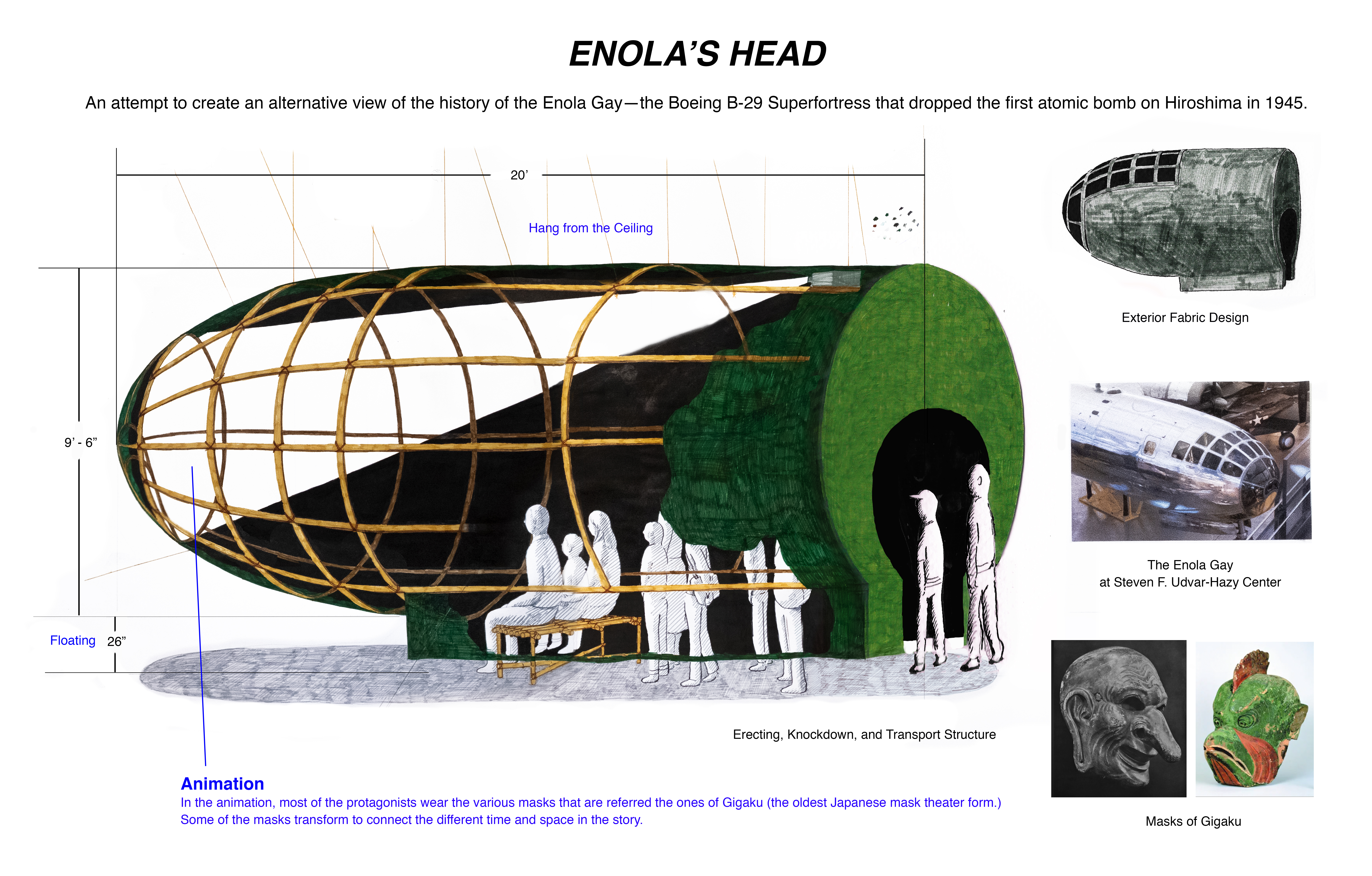
MinerAlert

MinerAlert
 |
Gaku Tsutaja, ENOLA'S HEAD, artist proposal for structure, 2020. |
The Rubin Center is proud to announce the commissioning of a site-specific piece in fall of 2021 by Japanese artist Gaku Tsutaja. Gaku uses drawing, sculpture, performance, animation and a deeply personal research process to explore the material culture and living history of the atomic bomb. Her drawings and animations create complex constellations of people, objects and events, shifting our understanding of complicity and victimhood and challenging traditional historic accounts based on nationalist frameworks. ENOLA'S HEAD is a motion picture theatre shaped like the nose part of the Enola Gay, the Boeing B-29 Superfortress that dropped the first atomic bomb on Hiroshima in 1945 resulting in more than 140,000 deaths that year, and many more over time. The theatre hangs from the ceiling and floats in the air, leaving the viewers legs visible to others in the gallery, a reference to Gigaku, one of the oldest but now extinct forms of Japanese masked performance, with the viewers here wearing a giant mask of the Enola Gay. The viewers watch a film of an allegorical narrative of the history of the atomic bomb with imaginary humanoid animal characters. The story is based on fact and refers to four locations and people involved in the Manhattan Project following the cold war. 1. Los Alamos and Alamogordo (New Mexico); 2. Hiroshima and Nagasaki (Japan); 3. Hanford Site and Spokane (Washington); 4. Wendover (Utah). The narrative features the viewpoints of the victims for the nuclear weapon in the U.S. as well as Japanese civilians in Hiroshima and Nagasaki: Native Americans, Downwinders, American workers, U.S. soldiers. The characters of the physicist, doctor, bombardier, president, atomic energy agency, and activist also have the important roles in the story.
This project began in part with a 2019 site visit to the Rubin Center which included several days at the White Sands missile range and surrounding area, home of the atomic bomb. Over 2020 Gaku made additional research trips following the material history of Enola Gay to Wendover, Hiroshima, Los Alamos and Hanford more in preparation for the creation of the site-specific commission. She will use original drawings of the material culture found at these sites and the museums and institutions related to them, giving visibility to powerful but often overlooked role of military infrastructure in our desert landscape and in the El Paso region. The contemporary and historic presence of the military and its infrastructure has been key to our broader exploration of this region and its context. El Paso is home to the two largest military installations of the US Army – White Sands Missile Range and Fort Bliss. Previous Rubin Center projects engaging this topic have included Tomas Saraceno’s Aeroscene (2015) performance/launch at White Sands contrasting the first solar-powered human balloon flight with the high tech military infrastructure for aeronautics at that range, and projects like Shifting Sands: Recent Video from the Middle East (2012) featuring Middle Eastern artists who use film and video to explore the Middle Eastern desert as a site charged with meaning, directly and indirectly explore zones of recent conflict in which local US military personal are deeply engaged.
Link to Website: https://www.gakutsutaja.net
The artist shared work from her 2020 drawing projects that will be incorporated into an animation presented as part of the ENOLA'S HEAD exhibition at the Rubin Center in Fall of 2021. She also discussed collaboration with Fab Lab El Paso in the production of sculptural elements of her work.